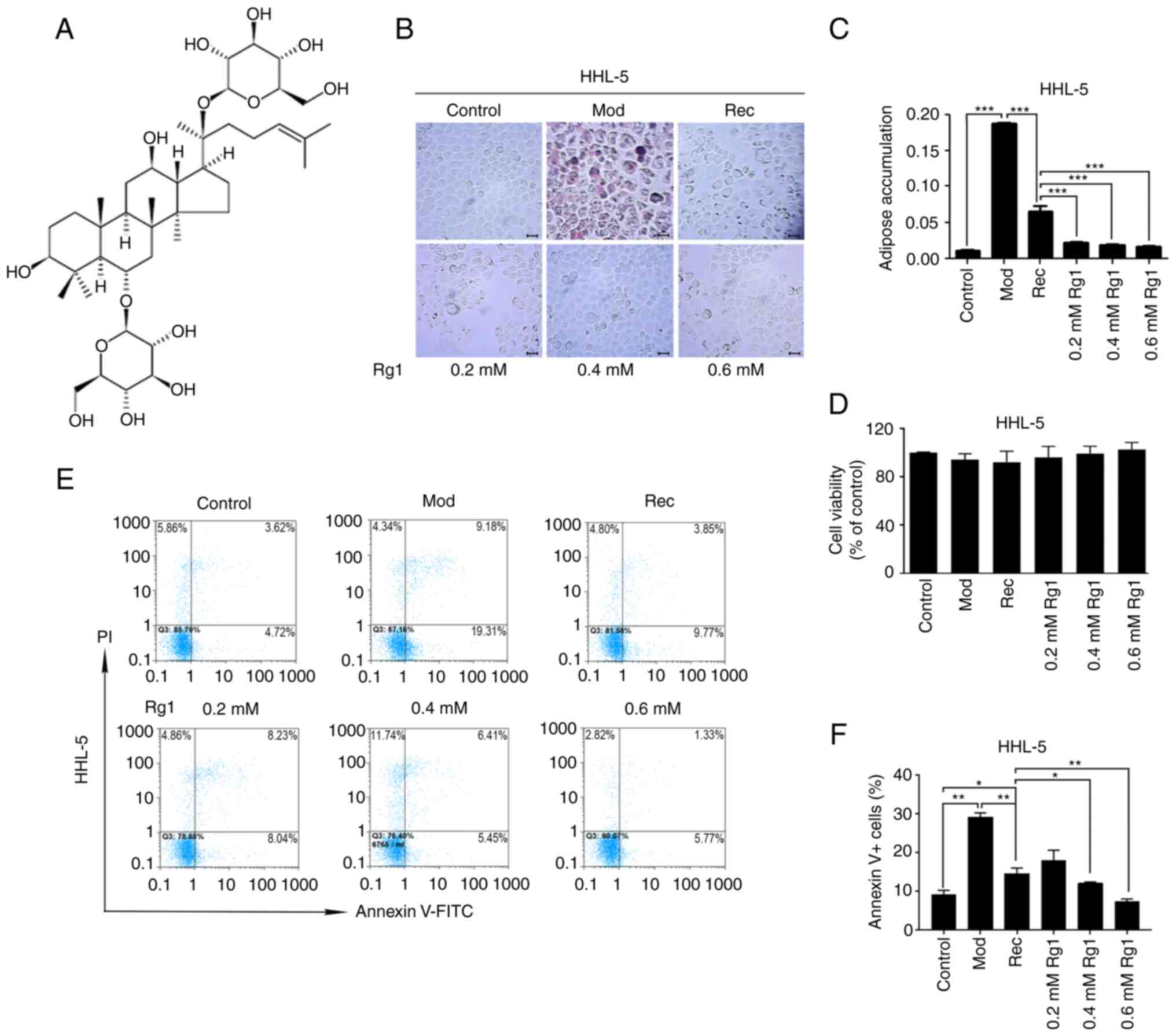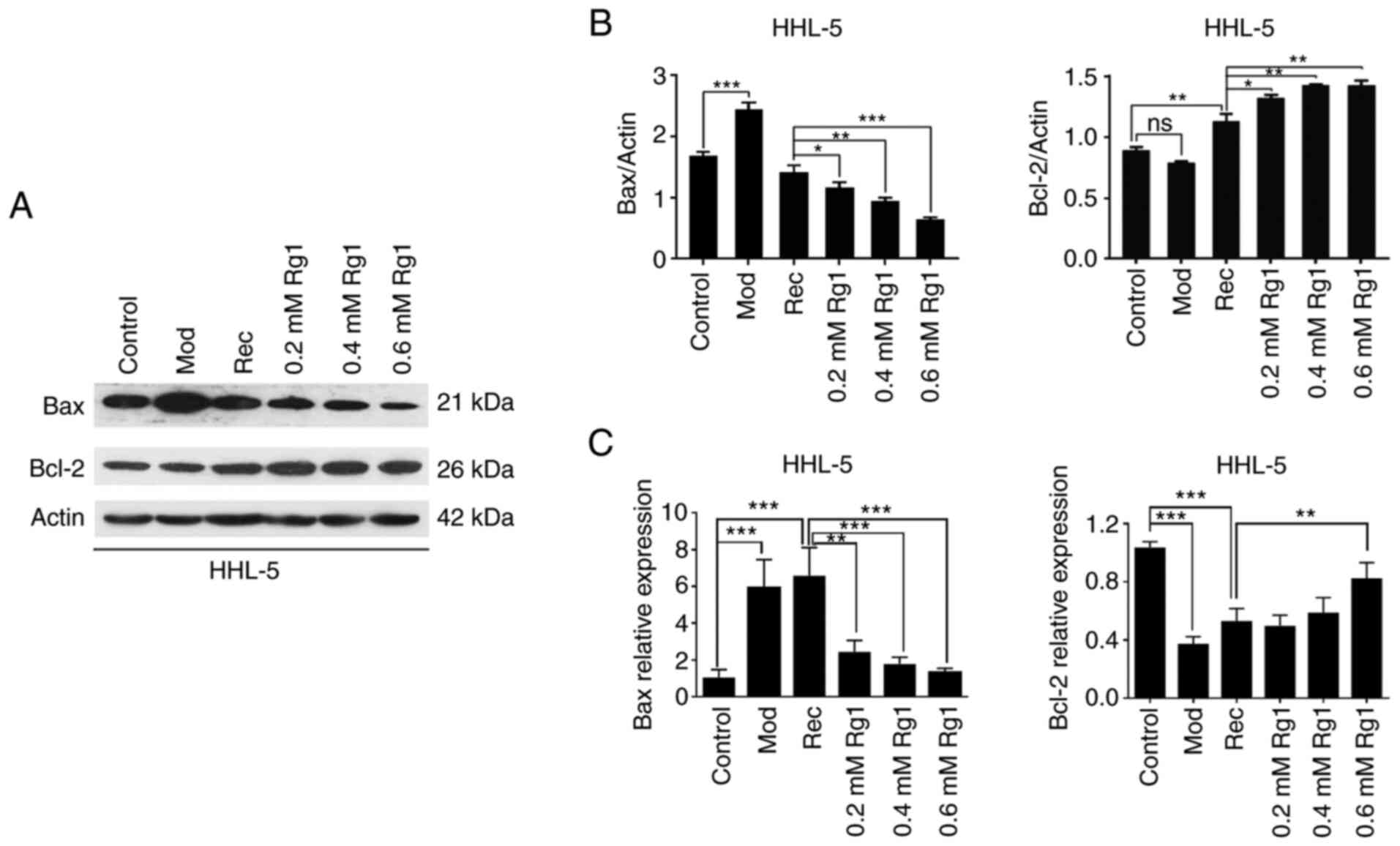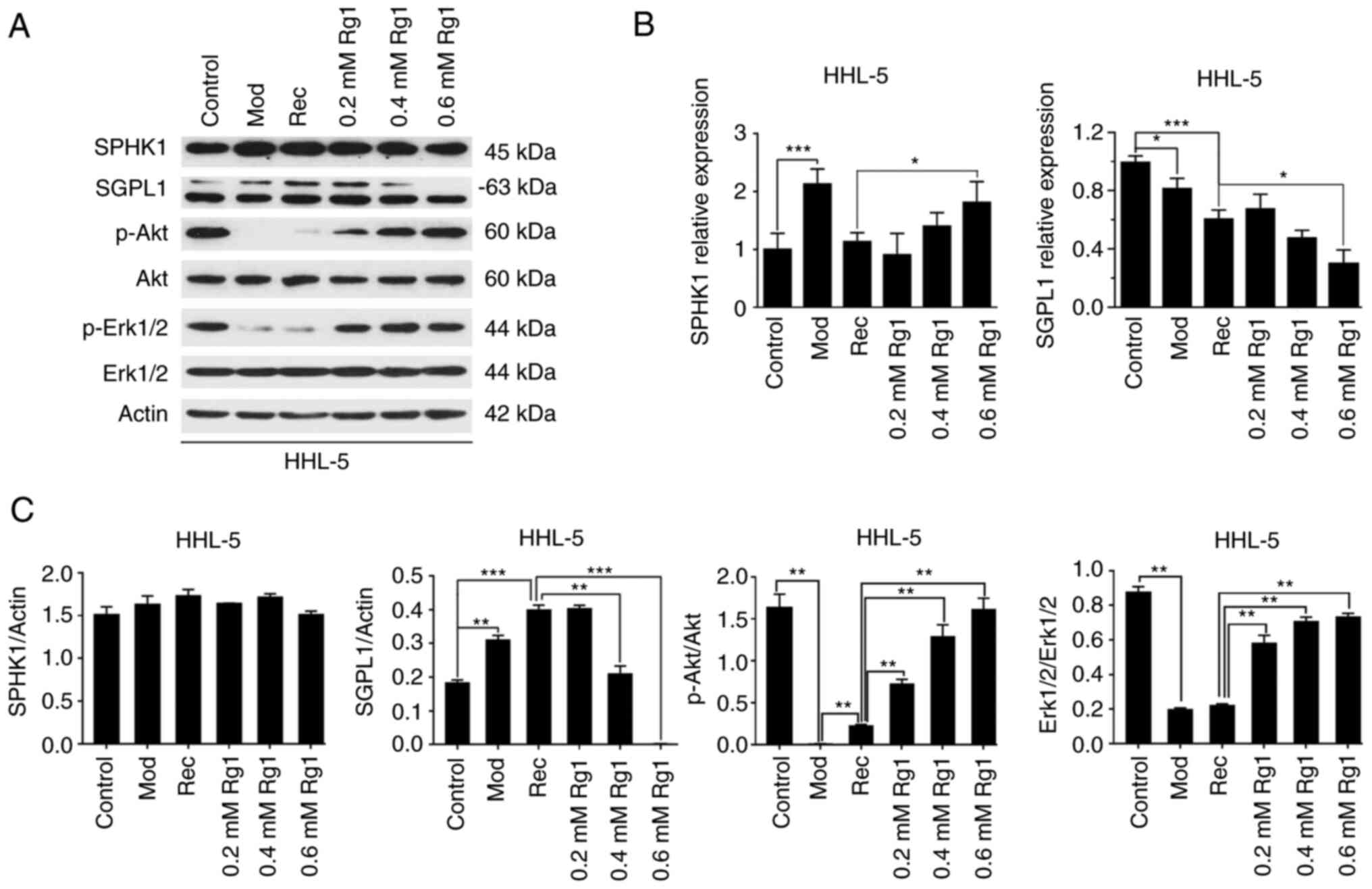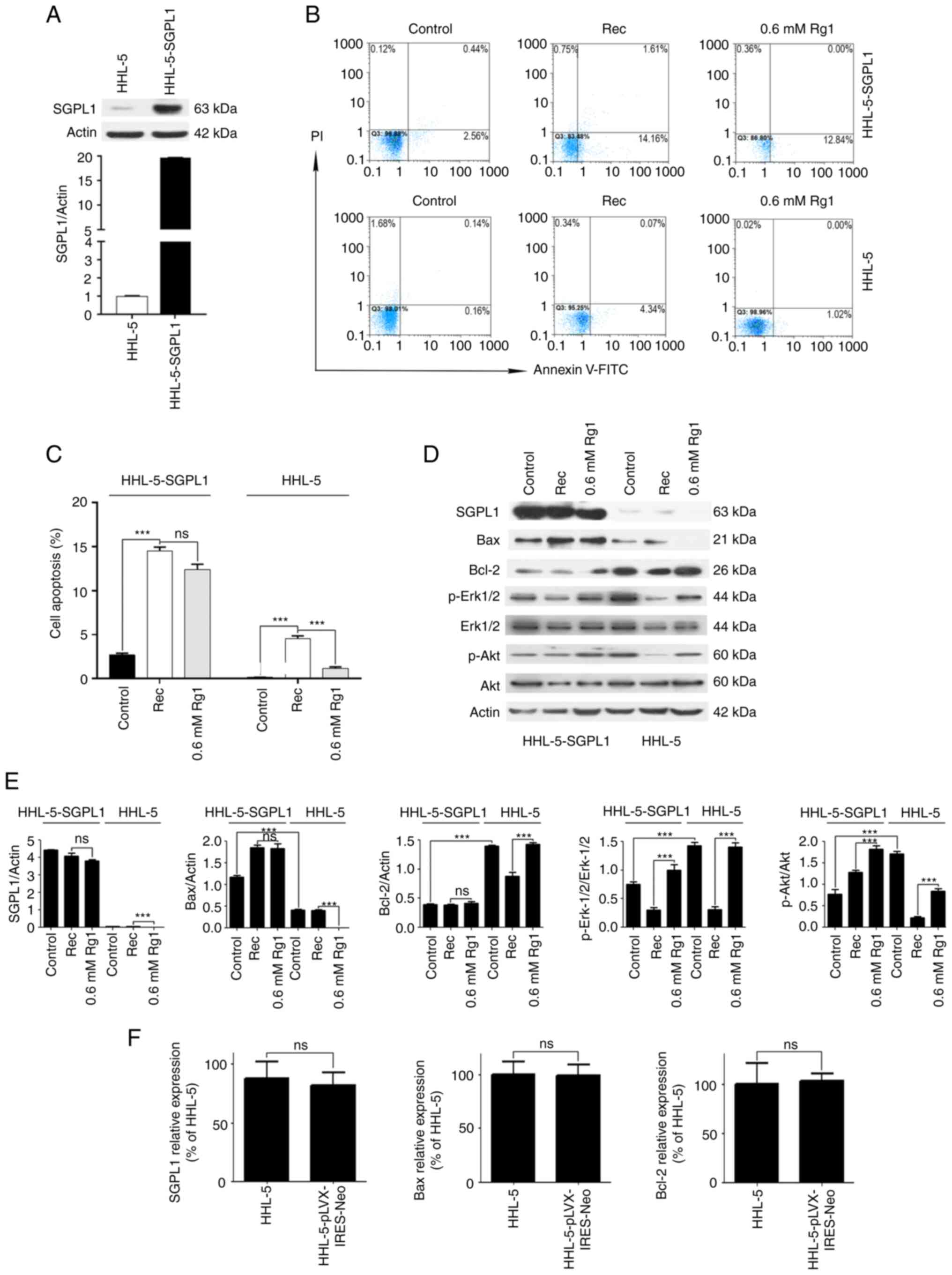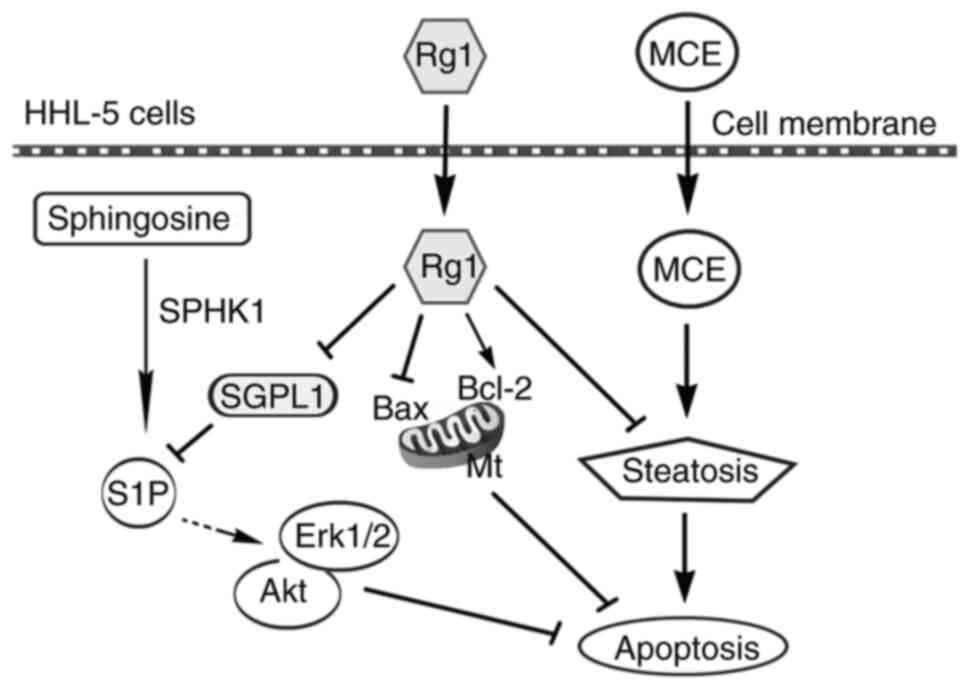|
1
|
Chalasani N, Younossi Z, Lavine JE,
Charlton M, Cusi K, Rinella M, Harrison SA, Brunt EM and Sanyal AJ:
The diagnosis and management of nonalcoholic fatty liver disease:
Practice guidance from the american association for the study of
liver diseases. Hepatology. 67:328–357. 2018. View Article : Google Scholar : PubMed/NCBI
|
|
2
|
Nishioji K, Sumida Y, Kamaguchi M,
Mochizuki N, Kobayashi M, Nishimura T, Yamaguchi K and Itoh Y:
Prevalence of and risk factors for non-alcoholic fatty liver
disease in a non-obese Japanese population, 2011–2012. J
Gastroenterol. 50:95–108. 2015. View Article : Google Scholar : PubMed/NCBI
|
|
3
|
Estes C, Anstee QM, Arias-Loste MT, Bantel
H, Bellentani S, Caballeria J, Colombo M, Craxi A, Crespo J, Day
CP, et al: Modeling nafld disease burden in China, France, Germany,
Italy, Japan, Spain, United Kingdom, And United States for the
period 2016–2030. J Hepatol. 69:896–904. 2018. View Article : Google Scholar : PubMed/NCBI
|
|
4
|
Li Z, Xue J, Chen P, Chen L, Yan S and Liu
L: Prevalence of nonalcoholic fatty liver disease in mainland of
China: A meta-analysis of published studies. J Gastroenterol
Hepatol. 29:42–51. 2014. View Article : Google Scholar : PubMed/NCBI
|
|
5
|
Gore E, Bigaeva E, Oldenburger A, Jansen
YJM, Schuppan D, Boersema M, Rippmann JF, Broermann A and Olinga P:
Investigating fibrosis and inflammation in an ex vivo NASH murine
model. Am J Physiol Gastrointest Liver Physiol. 318:G336–G351.
2020. View Article : Google Scholar : PubMed/NCBI
|
|
6
|
Buzzetti E, Pinzani M and Tsochatzis EA:
The multiple-hit pathogenesis of non-alcoholic fatty liver disease
(NAFLD). Metabolism. 65:1038–1048. 2016. View Article : Google Scholar : PubMed/NCBI
|
|
7
|
Li J, Yang C, Zhang S, Liu S, Zhao L, Luo
H, Chen Y and Huang W: Ginsenoside Rg1 inhibits inflammatory
responses via modulation of the nuclear factor-κB pathway and
inhibition of inflammasome activation in alcoholic hepatitis. Int J
Mol Med. 41:899–907. 2018.PubMed/NCBI
|
|
8
|
Wang ZL, Chen LB, Qiu Z, Chen XB, Liu Y,
Li J, Wang L and Wang YP: Ginsenoside Rg1 ameliorates testicular
senescence changes in D-gal-induced aging mice via
anti-inflammatory and antioxidative mechanisms. Mol Med Rep.
17:6269–6276. 2018.PubMed/NCBI
|
|
9
|
Tang F, Lu M, Yu L, Wang Q, Mei M, Xu C,
Han R, Hu J, Wang H and Zhang Y: Inhibition of TNF-α-mediated NF-κB
activation by ginsenoside Rg1 contributes the attenuation of
cardiac hypertrophy induced by abdominal aorta coarctation. J
Cardiovasc Pharmacol. 68:257–264. 2016. View Article : Google Scholar : PubMed/NCBI
|
|
10
|
Tang YL, Zhou Y, Wang YP, He YH, Ding JC,
Li Y and Wang CL: Ginsenoside Rg1 protects against
sca-1+ HSC/HPC cell aging by regulating the SIRT1-FOXO3
and SIRT3-SOD2 signaling pathways in a γ-ray irradiation-induced
aging mice model. Exp Ther Med. 20:1245–1252. 2020. View Article : Google Scholar : PubMed/NCBI
|
|
11
|
Huang SL, He XJ, Li ZF, Lin L and Cheng B:
Neuroprotective effects of ginsenoside Rg1 on oxygen-glucose
deprivation reperfusion in PC12 cells. Pharmazie. 69:208–211.
2014.PubMed/NCBI
|
|
12
|
Wang J, Hou J, Lei H, Fu J, Pan Y and Liu
J: Synergistic neuroprotective effect of microglial-conditioned
media treated with geniposide and ginsenoside Rg1 on hypoxia
injured neurons. Mol Med Rep. 12:5328–5334. 2015. View Article : Google Scholar : PubMed/NCBI
|
|
13
|
Xiao Q, Zhang S, Yang C, Du R, Zhao J, Li
J, Xu Y, Qin Y, Gao Y and Huang W: Ginsenoside Rg1 ameliorates
palmitic acid-induced hepatic steatosis and inflammation in HepG2
cells via the AMPK/NF-κB pathway. Int J Endocrinol.
2019:75148022019. View Article : Google Scholar : PubMed/NCBI
|
|
14
|
Peng X, Huang D, Yan M and Peng S:
Ginsenoside Rg1 improves liver function by regulating fat
metabolism in rats with non-alcoholic fatty liver disease. Chin J
Pathophysiol. 31:864–870. 2015.
|
|
15
|
Xiao Y, Hou YH, Yin X, Kang F, Li SD, Yang
SK and Tao JP: Ginsenoside Rg1 protects against hepatocyte
apoptosis in a rat model of non-alcoholic fatty liver disease. Chin
J Tissue Eng Res. 23:384–390. 2019.
|
|
16
|
Livak KJ and Schmittgen TD: Analysis of
relative gene expression data using real-time quantitative PCR and
the 2(−Delta Delta C(T)) Method. Methods. 25:402–408. 2001.
View Article : Google Scholar : PubMed/NCBI
|
|
17
|
Kwong E, Li Y, Hylemon PB and Zhou H: Bile
acids and sphingosine-1-phosphate receptor 2 in hepatic lipid
metabolism. Acta Pharm Sin B. 5:151–157. 2015. View Article : Google Scholar : PubMed/NCBI
|
|
18
|
Strub GM, Maceyka M, Hait NC, Milstien S
and Spiegel S: Extracellular and intracellular actions of
sphingosine-1-phosphate. Adv Exp Med Biol. 688:141–155. 2010.
View Article : Google Scholar : PubMed/NCBI
|
|
19
|
Younossi ZM, Koenig AB, Abdelatif D, Fazel
Y, Henry L and Wymer M: Global epidemiology of nonalcoholic fatty
liver disease-meta-analytic assessment of prevalence, incidence,
and outcomes. Hepatology. 64:73–84. 2016. View Article : Google Scholar : PubMed/NCBI
|
|
20
|
Singh S, Allen AM, Wang Z, Prokop LJ,
Murad MH and Loomba R: Fibrosis progression in nonalcoholic fatty
liver vs nonalcoholic steatohepatitis: A systematic review and
meta-analysis of paired-biopsy studies. Clin Gastroenterol Hepatol.
13:643–654. e1–9; quiz e39-40. 2015. View Article : Google Scholar : PubMed/NCBI
|
|
21
|
Warren CFA, Wong-Brown MW and Bowden NA:
BCL-2 family isoforms in apoptosis and cancer. Cell Death Dis.
10:1772019. View Article : Google Scholar : PubMed/NCBI
|
|
22
|
Edlich F: BCL-2 proteins and apoptosis:
Recent insights and unknowns. Biochem Biophys Res Commun.
500:26–34. 2018. View Article : Google Scholar : PubMed/NCBI
|
|
23
|
Gao Y, Chu S, Zhang Z and Chen N:
Hepataprotective effects of ginsenoside Rg1-a review. J
Ethnopharmacol. 206:178–183. 2017. View Article : Google Scholar : PubMed/NCBI
|
|
24
|
Xu Y, Yang C, Zhang S, Li J, Xiao Q and
Huang W: Ginsenoside Rg1 protects against Non-alcoholic fatty liver
disease by ameliorating lipid peroxidation, endoplasmic reticulum
stress, and inflammasome activation. Biol Pharm Bull. 41:1638–1644.
2018. View Article : Google Scholar : PubMed/NCBI
|
|
25
|
Hou Y, Gu D, Peng J, Jiang K, Li Z, Shi J,
Yang S, Li S and Fan X: Ginsenoside Rg1 regulates liver lipid
factor metabolism in NAFLD model rats. ACS Omega. 5:10878–10890.
2020. View Article : Google Scholar : PubMed/NCBI
|
|
26
|
Cobbina E and Akhlaghi F: Non-alcoholic
fatty liver disease (NAFLD)-pathogenesis, classification, and
effect on drug metabolizing enzymes and transporters. Drug Metab
Rev. 49:197–211. 2017. View Article : Google Scholar : PubMed/NCBI
|
|
27
|
Arrese M, Cabrera D, Kalergis AM and
Feldstein AE: Innate immunity and inflammation in NAFLD/NASH. Dig
Dis Sci. 61:1294–1303. 2016. View Article : Google Scholar : PubMed/NCBI
|
|
28
|
Qi J, Kim JW, Zhou Z, Lim CW and Kim B:
Ferroptosis affects the progression of nonalcoholic steatohepatitis
via the modulation of lipid peroxidation-mediated cell death in
mice. Am J Pathol. 190:68–81. 2020. View Article : Google Scholar : PubMed/NCBI
|
|
29
|
Lebeaupin C, Vallée D, Hazari Y, Hetz C,
Chevet E and Bailly-Maitre B: Endoplasmic reticulum stress
signalling and the pathogenesis of non-alcoholic fatty liver
disease. J Hepatol. 69:927–947. 2018. View Article : Google Scholar : PubMed/NCBI
|
|
30
|
Maceyka M, Harikumar KB, Milstien S and
Spiegel S: Sphingosine-1-phosphate signaling and its role in
disease. Trends Cell Biol. 22:50–60. 2012. View Article : Google Scholar : PubMed/NCBI
|
|
31
|
Yamada A, Nagahashi M, Aoyagi T, Huang WC,
Lima S, Hait NC, Maiti A, Kida K, Terracina KP, Miyazaki H, et al:
ABCC1-Exported Sphingosine-1-phosphate, produced by sphingosine
kinase 1, shortens survival of mice and patients with breast
cancer. Mol Cancer Res. 16:1059–1070. 2018. View Article : Google Scholar : PubMed/NCBI
|
|
32
|
Matula K, Collie-Duguid E, Murray G,
Parikh K, Grabsch H, Tan P, Lalwani S, Garau R, Ong Y, Bain G, et
al: Regulation of cellular sphingosine-1-phosphate by sphingosine
kinase 1 and sphingosine-1-phopshate lyase determines chemotherapy
resistance in gastroesophageal cancer. BMC Cancer. 15:7622015.
View Article : Google Scholar : PubMed/NCBI
|
|
33
|
Degagné E, Pandurangan A, Bandhuvula P,
Kumar A, Eltanawy A, Zhang M, Yoshinaga Y, Nefedov M, de Jong PJ,
Fong LG, et al: Sphingosine-1-phosphate lyase downregulation
promotes colon carcinogenesis through STAT3-activated microRNAs. J
Clin Invest. 124:5368–5384. 2014. View Article : Google Scholar : PubMed/NCBI
|
|
34
|
Brizuela L, Ader I, Mazerolles C, Bocquet
M, Malavaud B and Cuvillier O: First evidence of sphingosine
1-phosphate lyase protein expression and activity downregulation in
human neoplasm: Implication for resistance to therapeutics in
prostate cancer. Mol Cancer Ther. 11:1841–1851. 2012. View Article : Google Scholar : PubMed/NCBI
|
|
35
|
Dai G, Jiang Z, Bai Y, Zhang Q, Zhu L, Bai
X, Ju W and Pan R: Pharmacokinetic herb-drug interaction of
Xuesaitong dispersible tablet and aspirin after oral administration
in blood stasis model rats. Phytomedicine. 26:62–68. 2017.
View Article : Google Scholar : PubMed/NCBI
|
|
36
|
Li F, Zhao H, Han Z, Wang R, Tao Z, Fan Z,
Zhang S, Li G, Chen Z and Luo Y: Xuesaitong may protect against
ischemic stroke by modulating microglial phenotypes and inhibiting
neuronal cell apoptosis via the STAT3 signaling pathway. CNS Neurol
Disord Drug Targets. 18:115–123. 2019. View Article : Google Scholar : PubMed/NCBI
|
|
37
|
Chen H, Cao H, Guo X, Zhao M, Xia Q, Chen
B, Zhao T and Gao W: Naoxuekang, Xinnaoshutong and Xuesaitong
capsules for treating stroke: A protocol for a randomised
controlled trial. BMJ Open. 7:e0159832017. View Article : Google Scholar : PubMed/NCBI
|
|
38
|
Yang X, Xiong X, Wang H, Yang G and Wang
J: Xuesaitong soft capsule (Chinese patent medicine) for the
treatment of unstable angina pectoris: A meta-analysis and
systematic review. Evid Based Complement Alternat Med.
2013:9483192013. View Article : Google Scholar : PubMed/NCBI
|
|
39
|
Xu TZ, Shen XY, Sun LL, Chen YL, Zhang BQ,
Huang DK and Li WZ: Ginsenoside Rg1 protects against H2O2-induced
neuronal damage due to inhibition of the NLRP1 inflammasome
signalling pathway in hippocampal neurons in vitro. Int J Mol Med.
43:717–726. 2019.PubMed/NCBI
|
|
40
|
Li H, Xu J, Wang X and Yuan G: Protective
effect of ginsenoside Rg1 on lidocaine-induced apoptosis. Mol Med
Rep. 9:395–400. 2014. View Article : Google Scholar : PubMed/NCBI
|
|
41
|
Zhang Y, Ding S, Chen Y, Sun Z, Zhang J,
Han Y, Dong X, Fang Z and Li W: Ginsenoside Rg1 alleviates
lipopolysaccharide-induced neuronal damage by inhibiting NLRP1
inflammasomes in HT22 cells. Exp Ther Med. 22:7822021. View Article : Google Scholar : PubMed/NCBI
|















